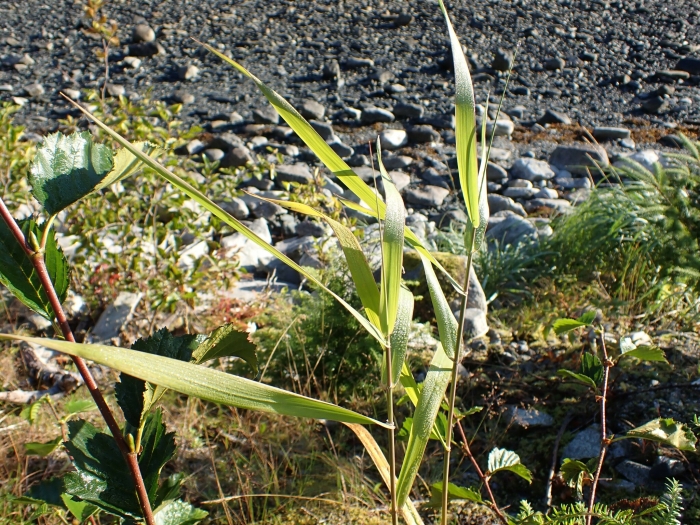Northern Reedgrass
(Calamagrostis inexpansa)
Northern Reedgrass (Calamagrostis inexpansa)
/
/

© Matt Muir
CC BY 4.0
Image By:
© Matt Muir
Recorded By:
Copyright:
CC BY 4.0
Copyright Notice:
Photo by: © Matt Muir | License Type: CC BY 4.0 | License URL: http://creativecommons.org/licenses/by/4.0/ | Uploader: muir | Publisher: iNaturalist |

























Estimated Native Range
Summary
Calamagrostis inexpansa, commonly known as Northern Reedgrass or Unexpanded Reed Grass, is a perennial grass native to wetland areas such as marshes, swamps, wet meadows, and along shorelines across North America, Siberia,. It exhibits a moderate growth rate and typically reaches a height of 2-4 feet (0.6-1.2 meters) with a spread of 1.5-2.5 feet (0.5-0.8 meters). This grass forms dense clumps and has narrow, green leaves. The inflorescence is a feathery, greenish-yellow panicle that blooms in the summer, adding a delicate texture to the landscape. While not particularly showy, the flowers provide a subtle charm and movement in the breeze.
Northern Reedgrass is valued for its ability to thrive in wet conditions and is often used for soil stabilization along water bodies. It is also suitable for rain gardens and naturalized areas where it can handle periodic flooding. This grass prefers full sun to part shade and grows best in medium to slow-draining clay or loam soils that retain moisture. It is relatively low maintenance but may require division every few years to manage its spread. While it is generally disease-resistant, it can be susceptible to rust in overly wet conditions. Northern Reedgrass is not known for being invasive but should be monitored to ensure it does not outcompete other desirable wetland species.CC BY-SA 4.0
Northern Reedgrass is valued for its ability to thrive in wet conditions and is often used for soil stabilization along water bodies. It is also suitable for rain gardens and naturalized areas where it can handle periodic flooding. This grass prefers full sun to part shade and grows best in medium to slow-draining clay or loam soils that retain moisture. It is relatively low maintenance but may require division every few years to manage its spread. While it is generally disease-resistant, it can be susceptible to rust in overly wet conditions. Northern Reedgrass is not known for being invasive but should be monitored to ensure it does not outcompete other desirable wetland species.CC BY-SA 4.0
Plant Description
- Plant Type: Grass
- Height: 2-4 feet
- Width: 1.5-2.5 feet
- Growth Rate: Moderate
- Flower Color: N/A
- Flowering Season: Summer
- Leaf Retention: Deciduous
Growth Requirements
- Sun: Full Sun, Part Shade
- Water: High
- Drainage: Medium, Slow
Common Uses
Bird Garden, Erosion Control, Low Maintenance, Water Garden
Natural Habitat
native to wetland areas such as marshes, swamps, wet meadows, and along shorelines across North America, Siberia,
Other Names
Common Names: Unexpanded Reed Grass
Scientific Names: Calamagrostis inexpansa , Calamagrostis americana , Calamagrostis americana , Calamagrostis breviseta var. lacustris , Calamagrostis californica , Calamagrostis canadensis var. acuminata , Calamagrostis canadensis var. arcta , Calamagrostis chordorrhiza , Calamagrostis crassiglumis , Calamagrostis crassiglumis
GBIF Accepted Name: